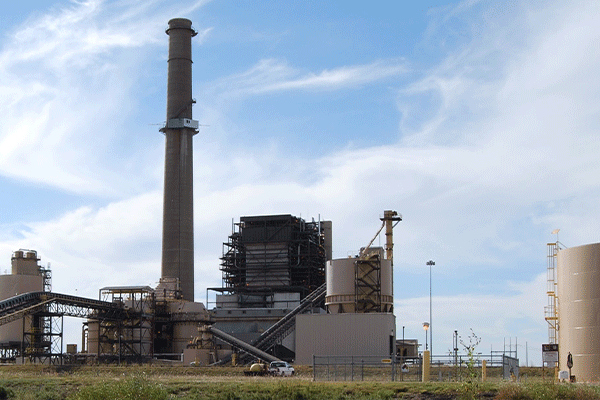OKLAHOMA CITY – A coal-fired electricity generating plant in north Texas that is owned in part by Public Service Co. of Oklahoma (PSO) will be retired this fall.
The 650 megawatt single unit Oklaunion power plant near Vernon, Texas, about half an hour’s drive southwest of Frederick, is scheduled to be decommissioned and permanently shut down on Oct. 1, said Stan Whiteford, region communications manager for American Electric Power (AEP), parent company of PSO.
The Oklaunion power plant is co-owned by four partners: PSO (which operates the facility), 15.62%; AEP Texas, 54.69%; the City of Brownsville, Texas, 17.97%; and the Oklahoma Municipal Power Authority, 11.72%.
The OMPA is a non-profit organization that serves 42 municipally owned electric systems. The public power entity is owned by the cities it serves, which include Altus, Comanche, Duncan, Eldorado, Frederick, Granite, Mangum, Manitou, Marlow, Olustee and Walters.
COAL-FIRED PLANT NOT COMPETITIVE IN TEXAS MARKET
The owners’ intention to pursue closure of the plant was announced in September 2018, and PSO filed a Notice of Suspension of Operations for Oklaunion with ERCOT (the Electric Reliability Council of Texas) in January of this year. ERCOT, which is based in Austin, Texas, operates the electric grid and manages the deregulated market for 75% of Texas.
“The reason behind the ownership decision to close is that power produced by Oklaunion is no longer competitive in the ERCOT market,” Whiteford said. The Oklaunion plant “struggles competitively” in the ER- COT market. Lower-cost gas generation and continued growth of lower-cost wind energy in the region “drive the economics,” he said.
Each of the four co-owners “will determine what, if anything, they will need to do to make up for their share” of the Oklaunion power plant’s output after it shuts down, Whiteford said. “At PSO, we already have plans in place for additional gas, wind and solar generation in the coming years.”
VERNON PLANT SUPPLIES POWER IN 2 MARKETS
“Because of Oklaunion’s unique ownership arrangement, the plant operates in two reliability regions (ERCOT and SPP) and supplies electricity to competitive and regulated markets alike,” Whiteford said.
SPP is the Southwest Power Pool, headquartered in Little Rock, Ark.
The Southwest Power Pool provides a portfolio of services to members in 14 states: Oklahoma, Texas, Arkansas, Iowa, Kansas, Louisiana, Minnesota, Missouri, Montana, Nebraska, New Mexico, North Dakota, South Dakota, and Wyoming.
The SPP is one of nine independent system operators/regional transmission organizations (ISOs/RTOs). SPP is mandated by the Federal Energy Regulatory Commission to ensure reliable supplies of power, adequate transmission infrastructure and competitive wholesale prices of electricity.
ISOs/RTOs are the “air-traffic controllers” of the electric power grid. They do not own the power grid; rather, they independently operate the grid minute-by-minute to ensure that electricity gets to customers and to eliminate power shortages.
PLANT CLOSING AFTER 34 YEARS
The Oklaunion power plant began commercial operation 34 years ago, in 1986, records show.
Its 650-megawatt maximum generating output can meet the electricity needs of approximately 162,500 homes, Whiteford said.
Oklaunion burns coal that’s mined in the Powder River Basin of Wyoming and is delivered by rail. When operating at maximum load around-the-clock, the plant burns approximately 9,500 tons of coal per day, Whiteford said. The coal ash residue is sold, he said. Coal ash is commonly reused in a number of ways: as a top layer on unpaved roads; as an ingredient in concrete, wallboard, and in school running tracks; as an agricultural soil additive; as structural fill or fill for abandoned mines; and as “cinders” to be spread on snowy roads.
The Vernon plant has 70 full-time employees, Whiteford said. Most live in the Vernon area or in Wichita Falls, Texas.
Those employees have several options when the plant closes, he said. There may be opportunities to transfer to other AEP power plants, “some will leave to take jobs outside of AEP,” and some will retire when the generation plant ceases operation.


